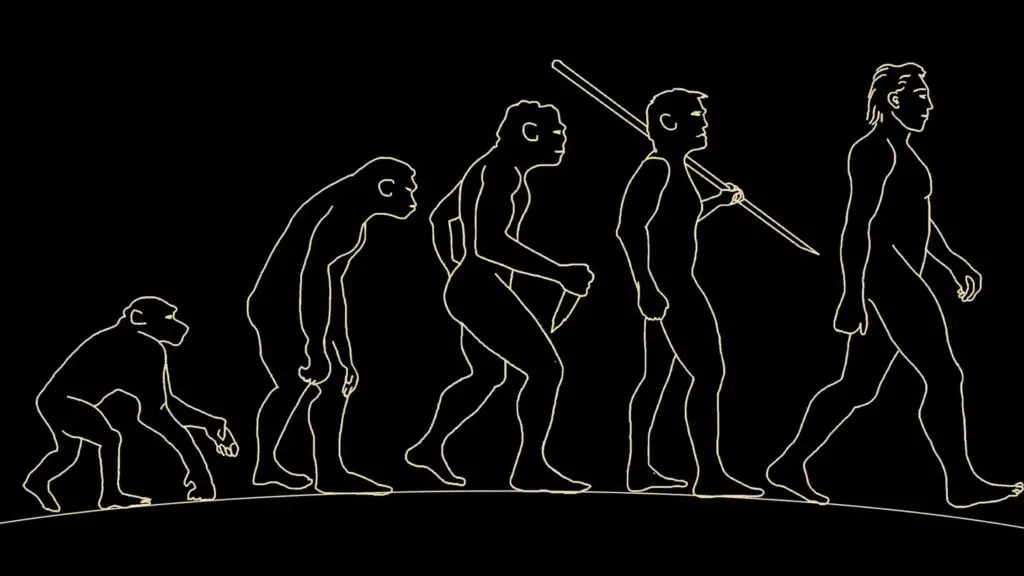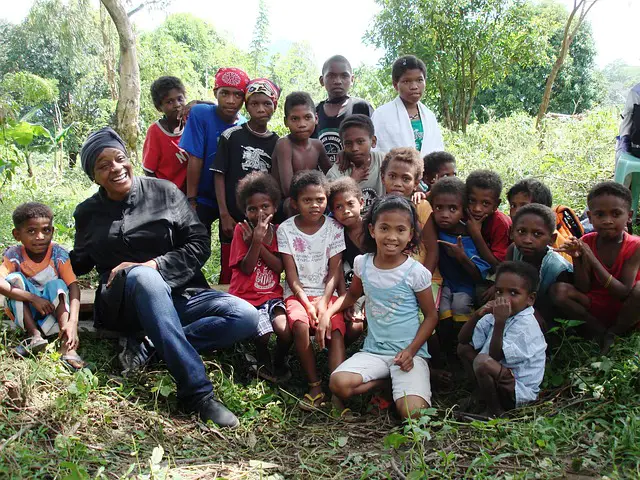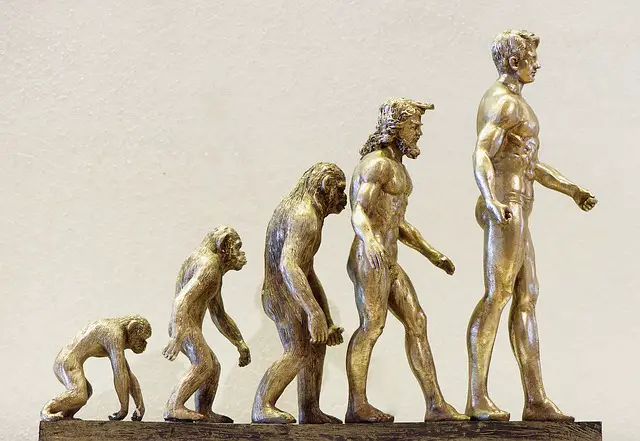Anthropology as a Social Science: An Overview

As a branch of social science, anthropology enables you to discover the richness and beauty of mankind. Understand it better by exploring its origins, subfields, and central concepts.
Click below to go to the main reviewer:
Table of Contents
- Origins of Anthropology
- Subfields of Anthropology
- Central Concepts in Anthropology
- Major Theories in Anthropology
- References
- Download Article in PDF Format.
- Test Yourself!
Origins of Anthropology
The Age of Enlightenment beginning in the eighteenth and early nineteenth centuries in Europe and North America has contributed to the development of anthropology as a discipline.
True to its Greek word origin, Anthropos, which means human, anthropology seeks to understand everything about human existence and condition—from our evolutionary history and biology to cultures and languages.
Prior to the period of the Age of Enlightenment, questions on human origins and societal conditions were answered and resolved through religious beliefs and ideas. But as societies developed, people began to explore and offer more rational and philosophical thoughts. This intellectual development then marked the rise of scientific reasoning and enlightenment thinkers.
Described simply as the study of humanity and its society and cultures, anthropology’s origins can be pointed to the early philosophical and historical writings of thinkers like Herodotus and Ibn Khaldun.
Herodotus is a Greek historian who spent his lifetime describing the culture of his time, referring to the Persian culture as the dominant culture in the east and the Greek culture for the west. He is now regarded as the father of history.
Ibn Khaldun, on the other hand, contributed his studies by citing the factors that bore an impact on the rise and fall of many civilizations, which have become the foundation of one of the subfields of anthropology.
Different accounts on the early world explorations that many travelers have seen in their crusades were very helpful in the development of the academic discipline. Aside from these, remarkable ideas from well-known Renaissance writers like Ciriaco de’ Pizzicolli of Ancona, Lorenzo Valla, and Biondo Flavio also made an impact on the anthropology we know today.
The nature of anthropology is both a science and humanities, which aim to examine the pre-history and history of humans and their societies and cultures without bias. Its methods attempt to further describe, explain, and understand mankind’s life.
Subfields of Anthropology
Having a wide range of topics of interest, anthropology has been subdivided into five categories, namely: cultural anthropology, linguistic anthropology, biological anthropology, archaeology, and applied anthropology.
The sub-disciplines are specialized fields that employ different techniques and methods but may also overlap at some point.
1. Cultural Anthropology

Cultural anthropology, also referred to as social anthropology, is the largest among the subfields and is concerned with social and cultural diversity.
It analyzes the learned behaviors of members of society in a specific environment through the utilization of ethnography (a type of in-depth research method that records and examines culture from the standpoint of its members).
Cultural anthropologists who take on this journey are called ethnologists. They either carry out participant-observation, the method of joining in the members’ activities while observing it in order to get a first-hand experience and perspective of that specific practice, or implement fieldwork, which is the process of living and completely immersing themselves for months or years together with the people of their study.
As they do these, they investigate their subject’s cultures and customs—how they make a living, their social interactions, beliefs and value systems, the institutions of how they organize themselves, and the social patterns in their given society.
Ethnologists often study particular social groups that are different from their own customs as this will help them come up with fresh insights. From their outsider’s point of view, they are expected to be more open-minded and not to limit themselves with what is commonly known as “normal” in order to better understand other people’s way of living.
Based on the output of their participant-observation or fieldwork, ethnologists zoom in and zoom out to see the similarities and differences of that specific culture compared to other societal groups.
The focus of social anthropology is more on social groups and institutions while cultural anthropology highlights the symbols and values in a society. One of the anthropologists who influenced this subdiscipline is Edward Burnett Tylor (1832-1917).
2. Linguistic Anthropology

With over 7,000 of them in the world, human language is very complex.
It has become the defining trait of mankind and enables people to have intellectual tools to plan and think, to teach and learn, and to direct people to certain actions. The branch of linguistic anthropology is particularly interested in how language shapes societies, along with human relations and networks, cultural beliefs, and societal customs.
Linguistic anthropologists document how people use their language in relation to its thought and culture. They usually start their research by learning the language from native speakers, its pronunciations, meanings, and the social conventions attached to it. They make use of the method of participant-observation, audiovisual recording, and interviewing of participants.
Many of them trace how a particular language has emerged, evolved, and diversified over time; how it helped in people’s survival and forming of a society’s identity; or how language has influenced one’s views of the world.
Some look at how language is used in modern-day societal contexts and how it is serving as an essential element in the socialization of the younger generation.
Many of the linguistic anthropologists concentrate their research on languages that are spoken by very few people while others specialize in historical linguistics or the act of exploring a language no longer in use and scrutinizing its connection to today’s languages.
3. Biological Anthropology

Also known as physical anthropology, biological anthropology revolves around the study of human evolution.
It focuses on the non-cultural aspects of humans such as their biological characteristics and physical developments that are genetically inherited. It desires to bring to light the connection of human’s earlier life forms, variations, and adaptations to their environment and social and cultural behaviors and practices throughout history.
In addition to this, its interest lies also in the study of near-humans or hominins, or the living relatives and fossil ancestors of mankind like the monkeys, apes, and other primates.
Biological anthropologists study the ancestors’ skeletal remains to understand how humans have adapted to their physical environment and different social structures. Meanwhile, in order to understand more about human evolution, they look closely at the behavioral and biological similarities and differences between human primates and non-human primates.
Under this subfield of anthropology includes three different research areas: human biology, primatology, and paleoanthropology.
Those who carry out research involving a study on ancient human relatives and investigating its fossil records are called paleoanthropologists.
Human biology is concerned with learning the changes in human anatomy and physiology over the years while primatology spends its time studying near-humans, usually done in a natural setting with the goal of understanding its capabilities and behavioral patterns. This is grounded on the assumption that the patterns from this would also reflect the lives of the earliest human ancestors—thus, helping the anthropologists understand the earliest human ancestors.
4. Archaeology

The primary interest of archaeology is the human past.
Archaeology is systematically done through excavating, dating, and analyzing various artifacts or material remains of the past like tools, potteries, shelters, and arts.
To uncover material remains, the process of excavation consists of digging and removal of dirt and stones. Archaeologists try to make use of these data to interpret and understand the experiences and activities of the early civilizations all throughout history and to reconstruct how ancient sites look like.
There are also those who put emphasis on examining prehistoric cultures which existed in a period prior to the invention of writing systems.
Archaeologists are classified into five categories, depending on their field of concentration.
Those who are into the ancient civilizations of the Middle East and Mediterranean worlds like Egypt, Mesopotamia, Greece, and Rome are the classical archaeologists.
Furthermore, the group whose main agenda is to recover the unrecorded aspects of life in modern society is composed of historical archaeologists.
Those whose attention is focused more on the ancient pre-literate societies like that of the early North American Indians are called prehistoric archaeologists. There are also underwater archaeologists (a group who excavate submerged cities or ancient shipwrecks) and zooarchaeologists or those who analyze animal remains that are found in archaeological sites.
5. Applied Anthropology
Simply put, applied anthropology is the application of anthropological theories, research, and methods to solve a particular problem. This is the “anthropology that is put to use”, serving the needs of the organizations and practical communities.
An example of this is a medical anthropologist who learns and reviews the differences in the culture so they can explain the causes of an illness and offer a treatment that is acceptable to a member of a particular society.
There are forensic anthropologists as well who assist the police in discovering the remains usually of murder and disaster victims.
Central Concepts in Anthropology
This section briefly explains some of the most central concepts in the field of anthropology that are deemed as crucial in understanding humanity.
1. Culture
The idea of culture encompasses all the works in anthropology.
Culture is a powerful and binding element that shapes people’s worldviews and ways of living. It includes beliefs and practices that members follow and share with one another.
Beliefs pertain to the mental aspects of culture—knowledge, perspectives, philosophies, values, and so forth; while practices are the actions and behaviors of the people, which are motivated by their belief system.
It is through enculturation that one learns to become a member of a culture in a given society. This process is comprised of both the instructions coming from the family and peers and also by observation and imitation.
Culture is symbolic as this reflects the values, norms, and beliefs of the people but this also changes and adapts to both internal and external factors.
Anthropologists acknowledge culture as one of the main factors that affect man’s evolution and societal context and in fact, they have developed approaches on how to study the different cultures across the globe.
Franz Boas (1858-1942), the founder of American anthropology, was the proponent of the concept of cultural relativism (understanding a culture based on its own terms and not on the standard of one’s own culture). This is opposed to the European’s ethnocentrism or the belief that one’s own culture is better than the culture of others.
Previous scholars attempted to study other cultures through mere analyzing of written accounts and stories but have opted to not have direct contact with their subjects. This has been termed the armchair anthropology.
However, modern anthropology has dominantly employed the method of fieldwork in understanding cultures.
2. Society
Society as defined by anthropologists is a group of people with sustained interactions and shared culture. It highlights social interactions and links as to how this makes up the culture of a given society. It places societal patterns and their development into a historical context and links them with human evolution, variations, and adaptation.
3. Holism
Conceptualized by Boas, holism is meant to take into consideration both the historical and cultural aspects and foundations of a certain behavior, rather than relating the differences only to the biological factors.
Holism is from the Greek word, holos, meaning the totality of something. In the same way, when applied in anthropology, a culture should be approached in its entirety and not just limited to a single strait.
Related to this is the concept of cultural determinism or the idea that differences in human behaviors are caused by cultural factors and not the results of race or genes.
4. Language
Culture could not exist without language and vice versa.
Given this, language (a form of speech in an idealized form) is one of the most important features in any culture. Below is a list of some of its properties and usage:
- Language is the primary means of passing on and sharing culture with someone.
- Human language, unlike that of animals, is an open system (a communication form that can create new messages and meanings).
- It has many forms, which include body language like gestures, facial expressions, body movement, and eye contact; this is termed kinesics.
- Speech characteristics beyond the words spoken are called paralanguage; examples of this are pitch, tempo, loudness, and duration of sounds.
Despite the differences among the 7,000 languages in the world, linguists have identified a few similar characteristics (language universals). One of them is that all human languages are mainly used for communication purposes. All also change over time, have a basic order of word elements, and are symbolic systems.
One famous theory on language is the Sapir-Whorf hypothesis by Edward Sapir (1884-1939) and Benjamin Lee Whorf (1897-1941). This theory states that language determines one’s thought patterns and that language structure somehow limits one’s experiences of the world.
Language reflects the culture and human adaptation, that is why anthropologists are very zealous to flesh out how it came to be.
Major Theories in Anthropology
1. Social Evolution Theory
This theory is also known as unilineal evolution and is the first-ever theory that was developed for the discipline of anthropology.
Social evolutionists like Herbert Spencer, E.B. Taylor, and Lewis Morgan proposed that societies develop and go through universal stages of a cultural revolution, which is grounded on the assumptions of psychic unity (all individuals possess the same characteristics of the human mind, therefore, will undergo the similar process of development) and the Western cultural superiority.
This theory has helped anthropologists provide systematic and rational explanations of human societies.
2. Historical Particularism
Developed in the early twentieth century, this claims that every society must be understood in its own context—having a unique culture, environment, and most especially, historical process.
It employs the use of fieldwork as a method for cultural analysis. This was formed by Franz Boas and his students, which is in contrast with the social evolution theory of the nineteenth century.
3. Functionalism
Inspired by the structural-functionalist perspective in sociology, this treats culture as an interrelated whole and examines how a particular change would likely cause an effect on the other aspects of society.
A.R Radcliffe-Brown, who is a British anthropologist, is one of the prominent advocates of this theory.
4. Culture and Personality
Culture is understood in this lens through looking at the relationships between culture and human nature, as well as culture and individual personality.
This approach was theorized by Ruth Benedict and Margaret Mead. Its main assumption is that the differences among people across societies are the results of cultural differences that are inculcated in the individual’s childhood years.
5. Cultural Materialism
Used to analyze human societies, this perspective identified three levels of a universal pattern (infrastructure, structure, and superstructure).
A movement in one level will also result in a change in the other structures and this will likely be set within the society’s culture.
The basis for all the other levels is the infrastructure where people’s basic needs are met. The structure is composed of different social institutions like politics and economy while the superstructure represents ideology and symbolism.
References
Brown, N., Mcllwraith, T., and de Gonzales, L. (2012). Perspectives: An Open Introduction to Cultural Anthropology, 2nd Edition. Retrieved from https://perspectives.pressbooks. com/chapter/introduction-to-anthropology/
O’Neil, D. (2021). Fields of Anthropology. Retrieved from https://www2.palomar. edu/anthro/intro/fields.htm
Rowe, J. (n.d.). The Renaissance Foundations of Anthropology. Retrieved from https://anthrosource.onlinelibrary.wiley.com/doi/pdf/10.1525/aa.1965.67.1.02a00010
Previous topic: Sociological Terms
Return to the main article: The Ultimate Social Science Reviewer
Download Article in PDF Format.
Test Yourself!
1. Practice Questions [PDF Download]
2. Answer Key [PDF Download]
Written by Arleia Agustin
Arleia Agustin
A graduate of Bachelor of Arts in Sociology, Arleia Agustin took interest in research and writing during her collegiate years. The time she spent at the University of the Philippines Los Baños taught her the essence of social sciences, to understand the society in each of its facets, and to believe that it could be changed for the better. She loves to read, dream, observe and discover beautiful stories of the people she encounters.
Copyright Notice
All materials contained on this site are protected by the Republic of the Philippines copyright law and may not be reproduced, distributed, transmitted, displayed, published, or broadcast without the prior written permission of filipiknow.net or in the case of third party materials, the owner of that content. You may not alter or remove any trademark, copyright, or other notice from copies of the content. Be warned that we have already reported and helped terminate several websites and YouTube channels for blatantly stealing our content. If you wish to use filipiknow.net content for commercial purposes, such as for content syndication, etc., please contact us at legal(at)filipiknow(dot)net
